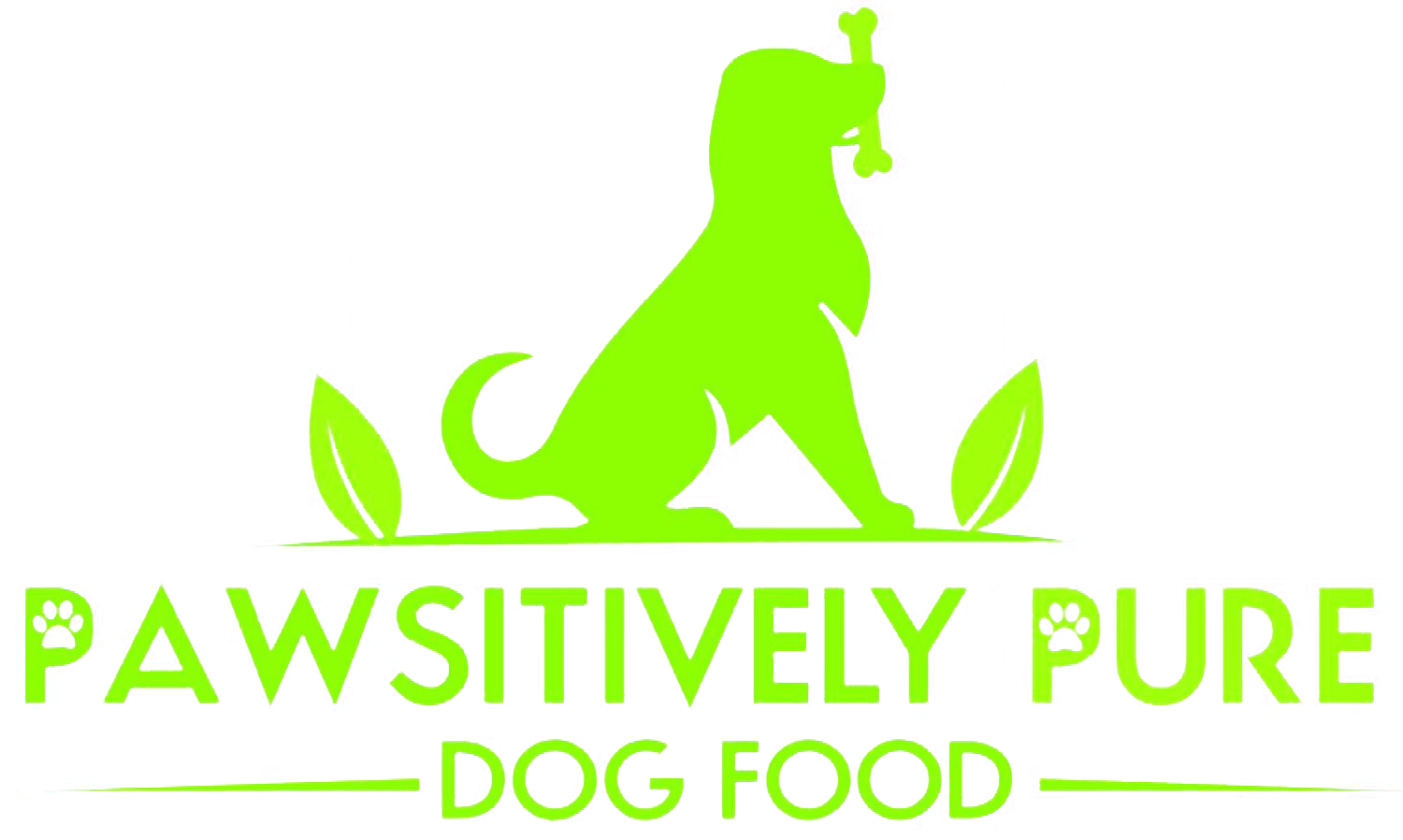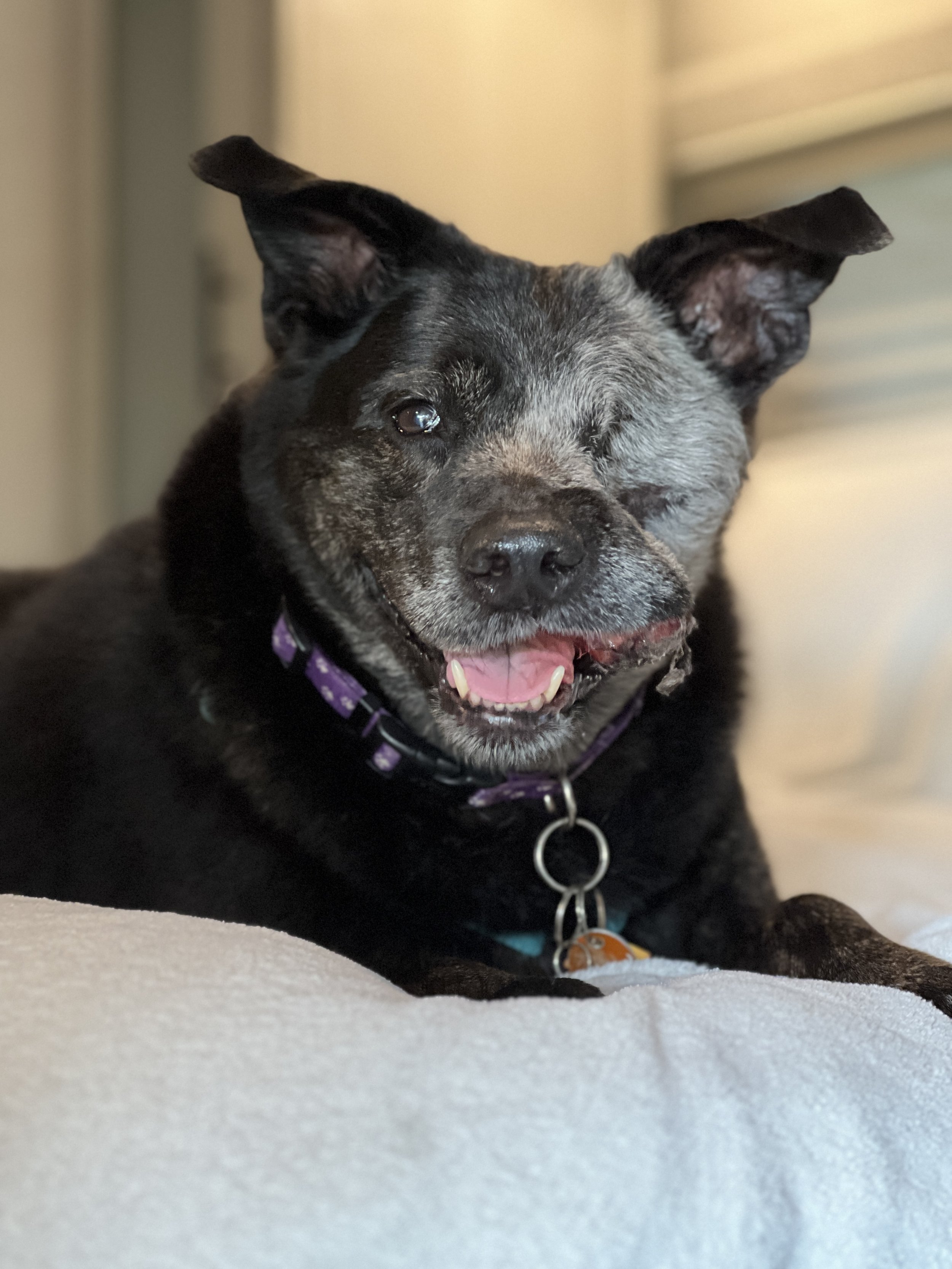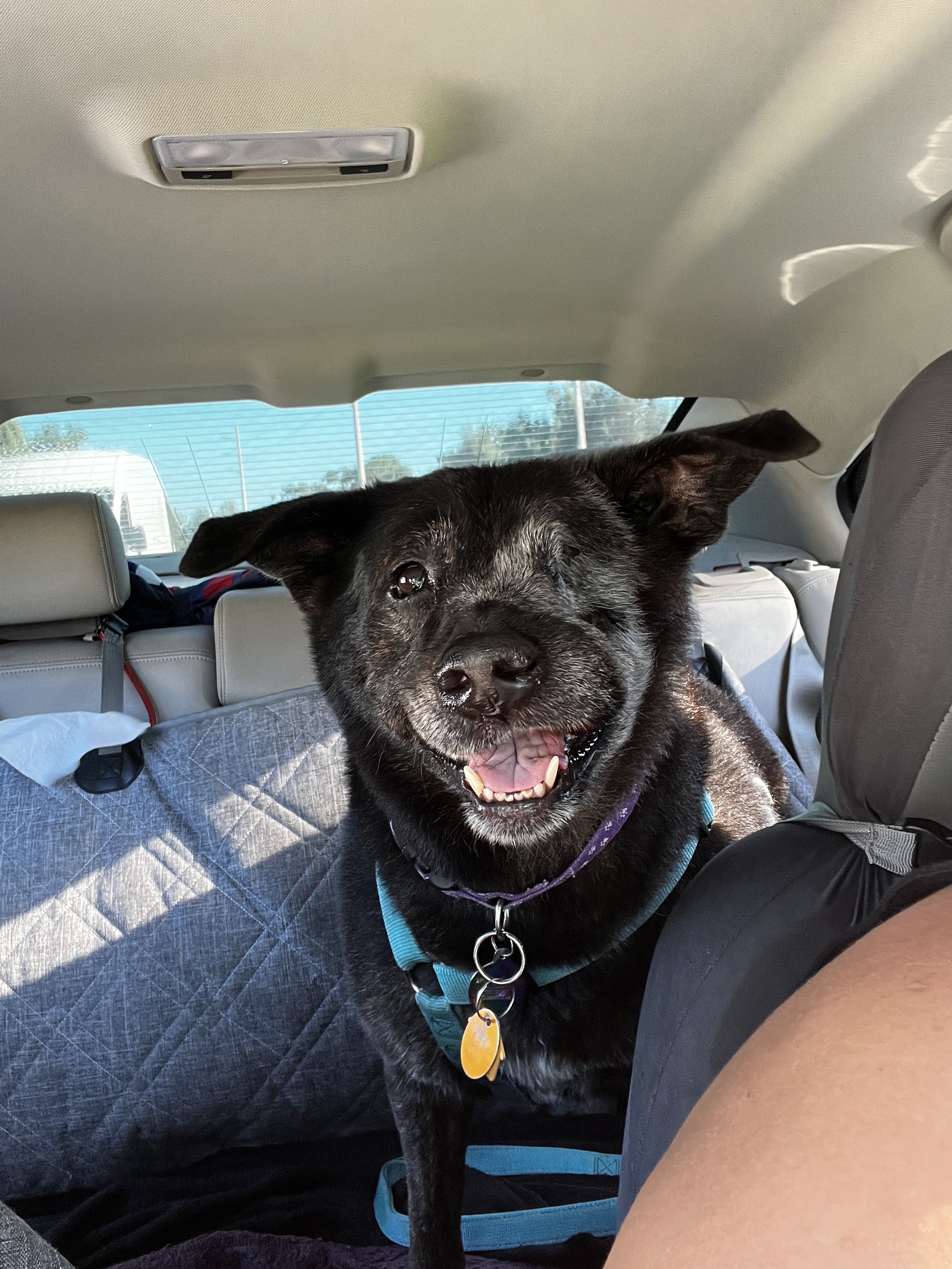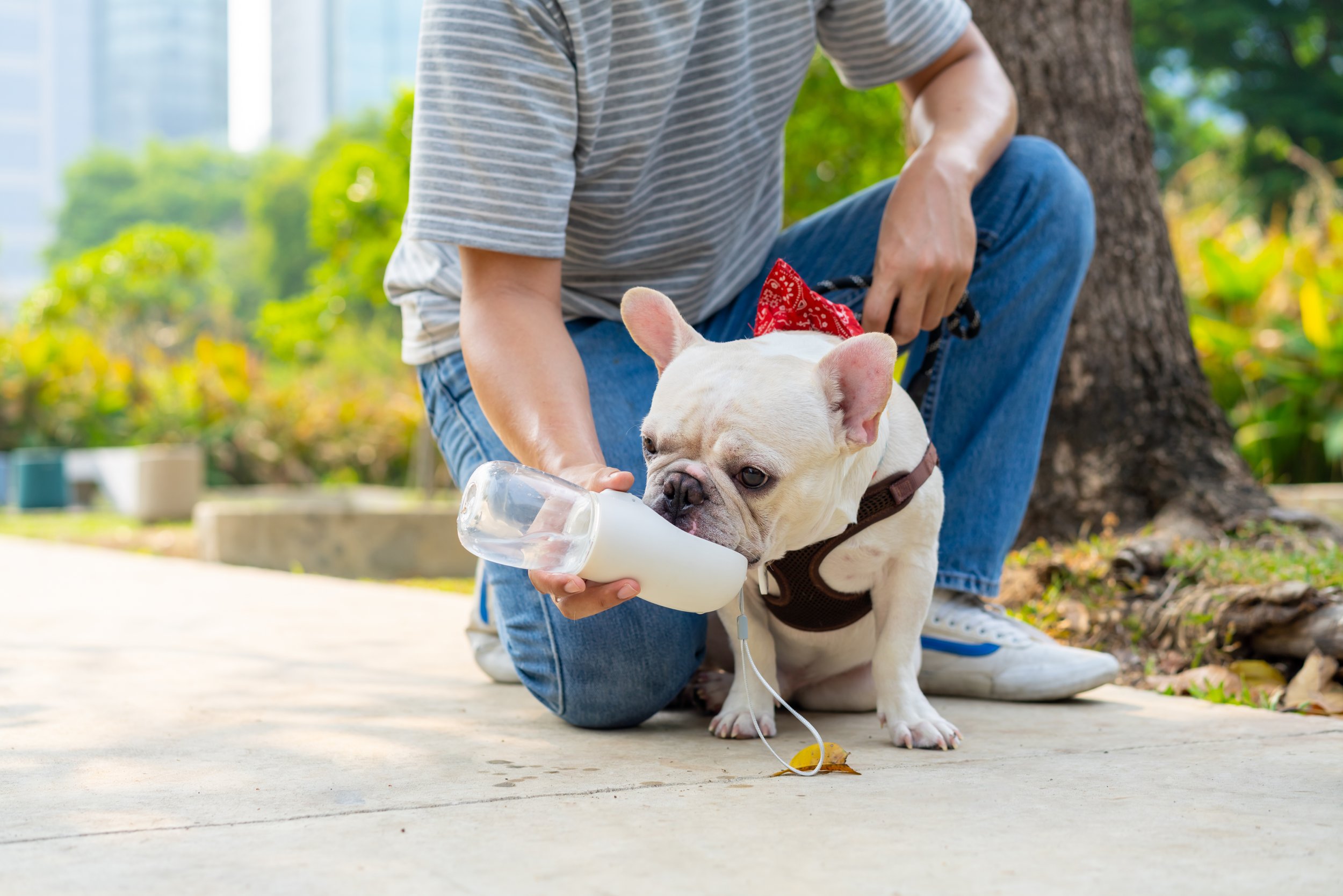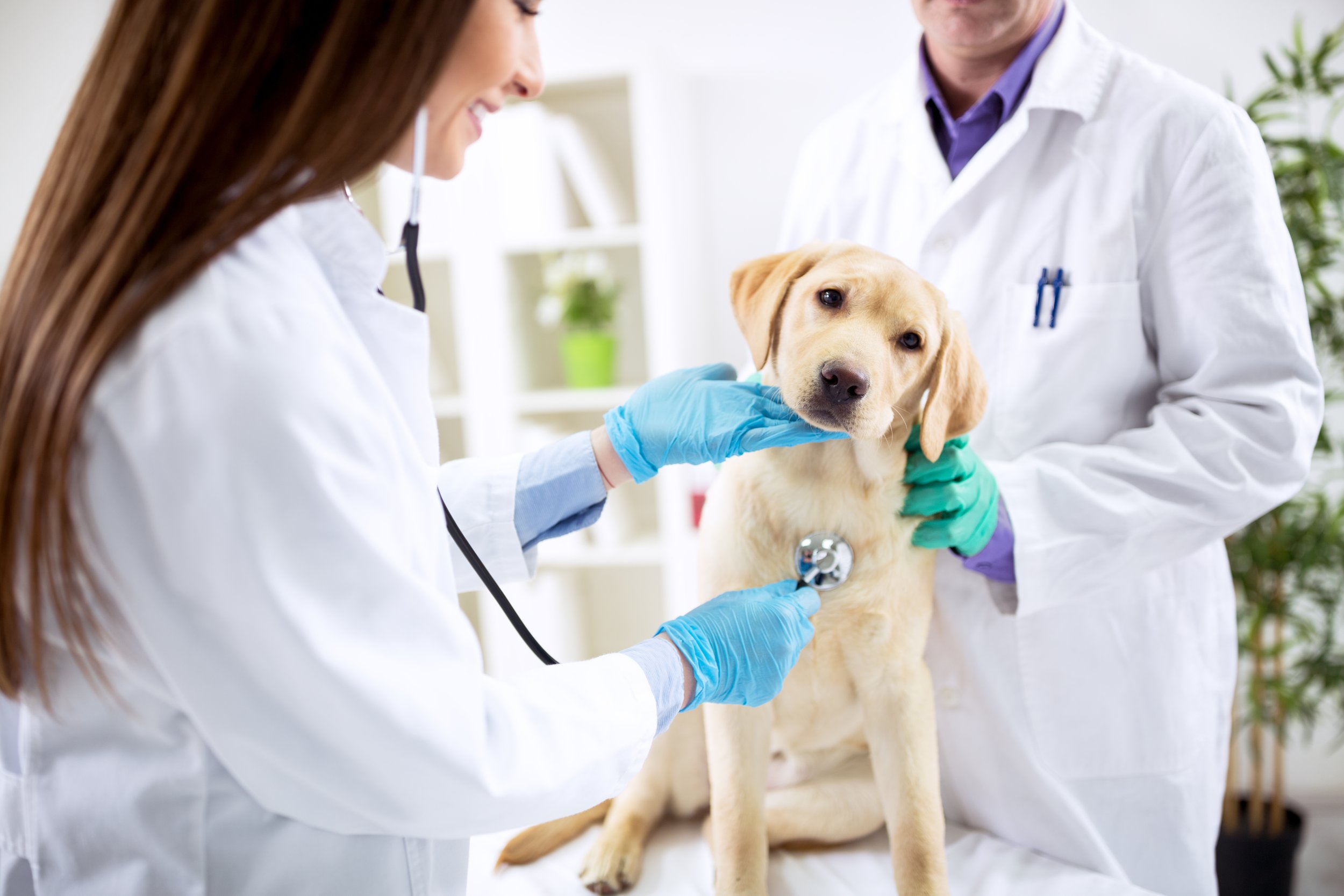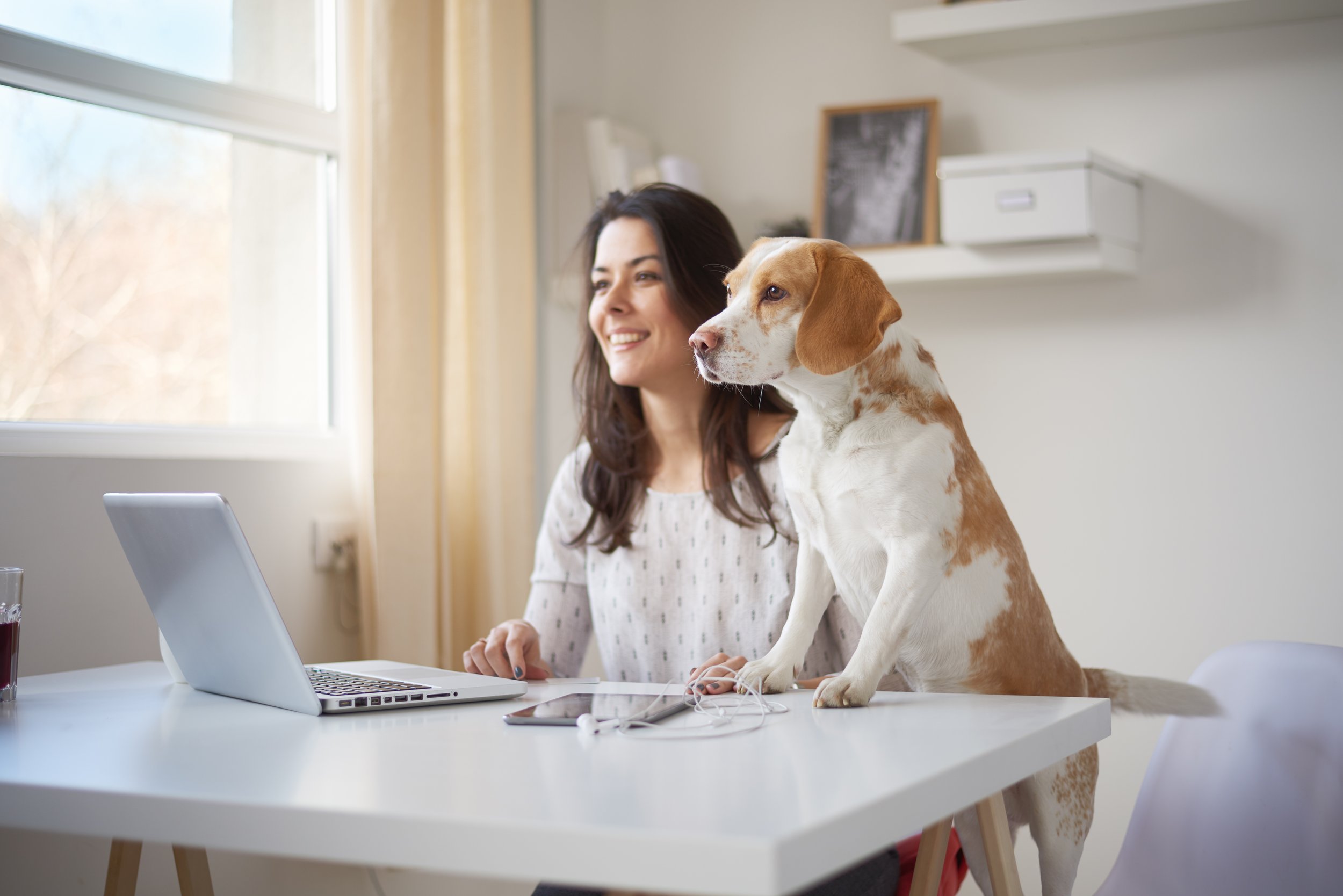Meet Sugar
If you follow us on social media, you’ve probably seen Sugar stopping by our stand on farmers market days. Sugar is a very special dog, and we consider ourselves lucky to have met her and her human, Kimberly. Despite her health issues, Sugar is the friendliest, happiest dog with all the love in the world to give. The following is her story, as written by her human.
———
My mother got Sugar from Seminole County Animal Services in 2012 after losing both of her black labs to cancer. She was told Sugar was given her name because of her sweet disposition. My mother always said Sugar seemed to have a special connection with me. After my mother passed away in 2015, Sugar became mine. She has been my emotional support through losing my mother, my job, and everyday stressors. She has been my travel companion for any mini-adventure. As of late, we have been on a tour of her last adventures because she is dying because of a myxomatous neoplasia sarcoma in her face. Last December, her face started to swell out of nowhere. I was told by one specialist it was a tooth abscess, and when my vet went to that surgery in January, they said it clearly wasn't that and took a sample for testing. After receiving the cancer diagnosis, I scrambled to get her to see a cancer specialist; meanwhile, I was in search of quality bone broth. That’s where I found Carole with Pawsitively Pure Dog Food. A friend of mine recommended her because he trusted the human-grade dog food, bone broth, and treats she made.
My first time meeting Carole was at the Maitland Farmers Market. I remember her being so kind to me as I clumsily purchased my first bag of bone broth for Sugar. She gave me her card and told me to call if I needed anything.
Fast forward to the second weekend in February, and I did just that. I called desperately, looking to help Sugar through food as the first cancer specialist told me there was nothing they could do but offer radiation, and because of the size of the mass, it would limit her life to six months. I decided at that point I would do whatever I could to give Sugar the best quality of life I could. I figured, why not start with her food? Up to then, Sugar had always been a grazing kibble dog. She never seemed excited about food but ate it because it was there. I always thought if the stores sell that food, it should be a balanced, safe meal. I was mistaken, and Carole opened my eyes to better choices for Sugar. She seemed so excited about her new food, waiting in the kitchen as I plated it for her.
Sugar and I went to UF Small Animal Hospital on 2/16, where their oncology surgical team said they could attempt to remove the mass, but Sugar would need radiation treatments afterward. I asked if there was anything else I could do to give her the best outcome, like changing her diet. I was told no; the priority would be just to keep her eating and make sure we don't cause any GI issues. I proceeded with that plan, and while there were speedbumps, Sugar finished her last radiation treatment in May. Throughout this process, Carole and Joe were there checking in and making sure Sugar had their chicken crisp treats for all our travels.
Everything seemed to be turning around until the end of June. Sugar started sneezing, and her primary vet chalked it up to her being more sensitive to allergies after radiation. Then, in July, her mouth began to bleed from what I thought was an abscess. I went back to UF only to hear the cancer was back and growing fast. I was given a two-month life expectancy for Sugar.
At that point, I focused what money I had left on giving her the best food and the best last adventures I could.
I genuinely believe Pawsitively Pure Dog Food has been an integral part of extending Sugar’s life. We are now in December and while Sugar looks different than what she once did, she is just as sweet and happy as she once was before.
I'm hoping she will continue to prove everyone wrong and live a few more months as I would like to take her to see snow for the first time in January.
